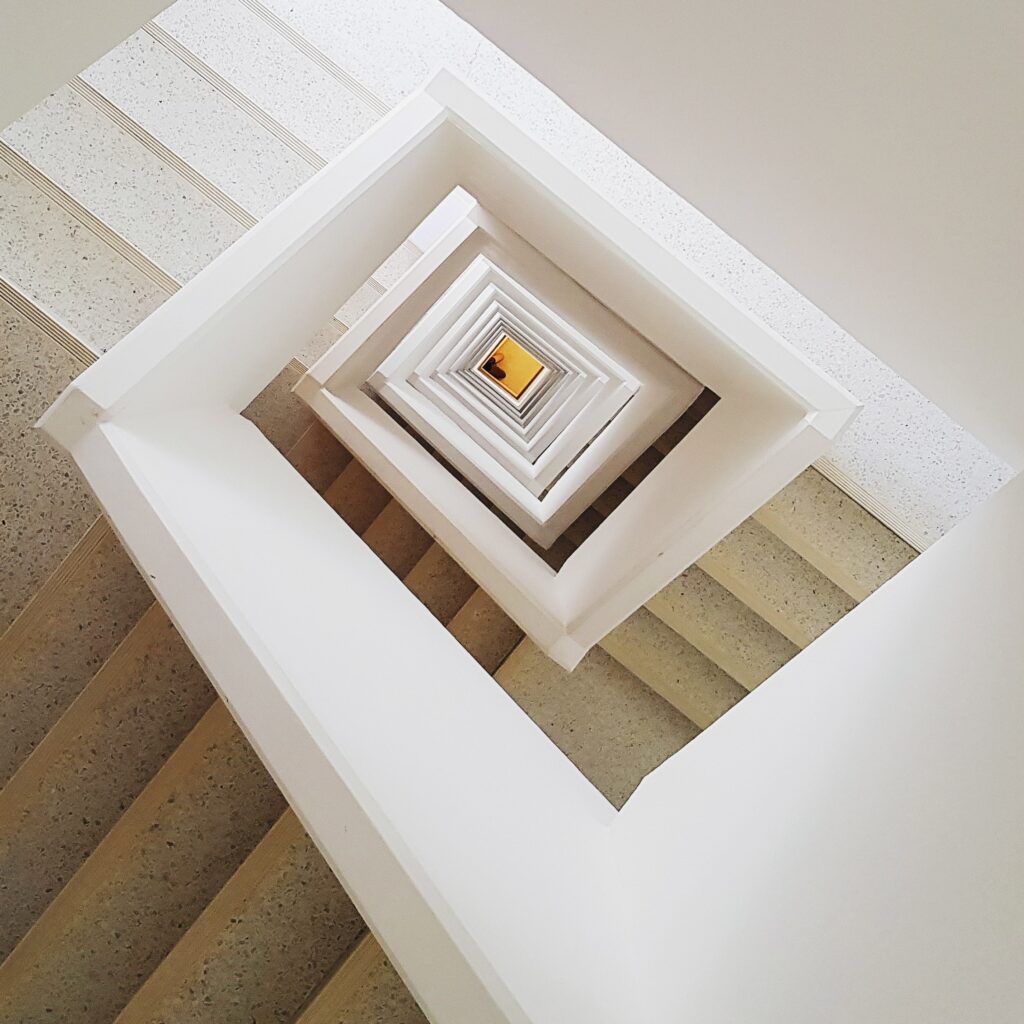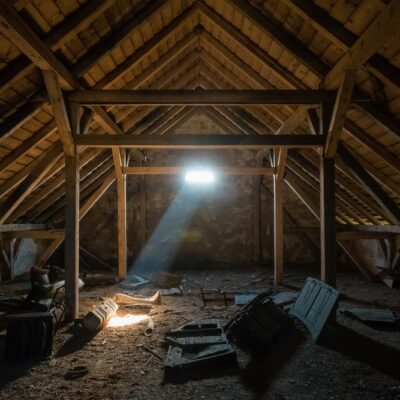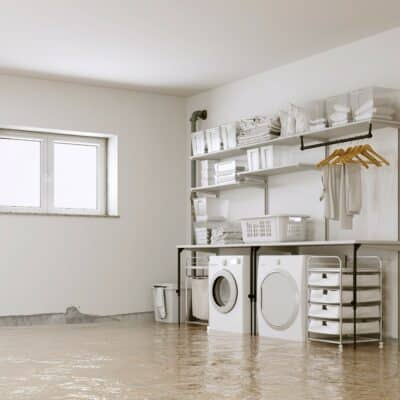Apartment and Condo Inspections: Multiunit Inspections with Multifaceted Risks
By Alyssa Cink
Last Updated May 1, 2025

People involved in the real estate industry know 2021 was a year to remember. Between stimulus checks, low mortgage rates, and the sharpest supply drop seen in decades, houses across the United States sold for record highs, writes online business publisher Kiplinger. According to Kiplinger’s article and data from the National Association of Realtors (NAR), existing homes sold for a median 14.6 percent more than in previous years.
That seller’s market pushed many Americans to find alternate housing. According to a New Orleans news station, a 2022 survey reported that 22 percent of households wanted to buy homes, but instead opted to continue renting for financial reasons. In fact, as of April 2022, the renter-to-owner ratio reached 50.1 percent, the lowest number since 2010. Meanwhile, condos have proven more affordable in most major cities, making them popular options—particularly among first-time buyers.
With rising interest in multifamily homes, many home inspectors have expanded their skill sets to offer apartment and condo inspections.
Inspecting Apartments and Condos vs. Standard Homes

Apartments and condos (condominiums) occupy an unusual space in this industry. Like a standard home, they’re built for residential purposes. In fact, they contain many of the same components as a single-family house. For this reason, Steven Rinehart of Rinehart Real Estate Inspection Service in Texas compares condominium inspections to a smaller-scale home inspection. With apartment inspections, you’re repeating the same process multiple times.
“You do [these inspections] similarly, like a small, little, one-bed, one-bath home, 38 times,” Rinehart said. “The rest of the construction is really pretty similar to a residence. Most of them are wood framed, shingles on the roof. So that’s usually the bulk of where you see people starting.”
However, venturing into apartment and condo inspections introduces a variety of nuances. These differences may affect how you approach your inspection and risk management.
For example, unlike single-family homes, apartments and condos are multiunit structures designed to house several families in one space. Many have shared areas for residents, such as a parking garage, pool, hot tub, gym, laundry facility, or playground. It’s also common to see multiple units stacked on top of each other on different levels.
Another important difference is ownership. With condos, each unit is individually owned. Owners are responsible for maintaining the insides of their respective units. However, exterior structures like stairs and shared spaces like pools are maintained by the homeowner’s association (HOA). These organizations set rules for maintaining clean, safe, and orderly communities. If an interested buyer solicits a condo inspection, then you would only inspect the interior of that one unit.
Meanwhile, apartment complexes are often owned by a landlord who rents units out to individual tenants. In this scenario, your client would likely solicit an inspection for every unit in the complex, along with some or all shared spaces.
Multiunit Inspections: Determining Scope
Many apartment and condo home inspection questions are about avoiding errors and omissions (E&O) and general liability claims. To manage your risk, the biggest consideration is your scope. By that, we mean which spaces you’re responsible for inspecting and which spaces you aren’t.
Commercial vs. Residential
What do inspectors look for in apartments and condos? To figure out, determine if you’re following commercial or residential standards of practice (SOPs).
What are commercial inspections? As we explain in our previous article, definitions vary. The International Association of Certified Home Inspectors’ (InterNACHI) sister organization, the Certified Commercial Property Inspectors Association (CCPIA), defines a commercial property as “a building, structures, and improvements located on a parcel of commercial real estate intended to generate a profit.”
For risk management purposes, the most important definition is the one your insurance provider uses. For example, let’s say your insurance policy defines a commercial property as anything larger than four residential units. A 40-unit apartment complex, for example, would likely classify as a commercial inspection due to the job’s magnitude. If your insurance policy excludes commercial property inspections, their definition could impact your coverage for that apartment inspection.
On the other hand, if clients need apartment and condo inspections for single units, those will likely classify as residential inspections.
Apartments vs Condos: Know your exclusions.
Once you know which SOP you’re following, it’s easier to determine which spaces are excluded from your apartment and condo inspections.
For example, at InspectorPro, condo inspections encompass the unit’s interior walls and everything inside them. We suggest using our agreement’s condominium addendum, which excludes common areas such as roofs, exterior walls, structural elements, parking spaces assigned to the condominium unit, pools, and spas. Here at InspectorPro, our condo addendum reads as follows:

Remember, shared spaces and exterior structures, like staircases or the roof, are usually the HOA’s responsibility—not the unit owner’s. If the unit owner isn’t responsible for maintaining it, then disclaim it (unless your SOP says otherwise).
Exclusions can look quite different with apartment inspections. Your insurance provider might not cover apartment pool inspections, even if you’re licensed to inspect them. This often applies to items excluded from your standard home inspection, too, like drainage systems and other components that aren’t readily accessible. If you have any questions about your coverage parameters for multiunit inspections, contact your insurance provider.
Condo Common Spaces
For those looking to add multifamily homes to their inspection repertoire, deciding which spaces to inspect or leave alone is a common challenge.
Reuben Saltzman of Structure Tech in Minnesota writes in a blog post that being limited to interior components is frustrating. He describes an inspection where a bird’s nest blocked the kitchen’s exhaust fan. If he hadn’t inspected the unit’s exterior, he wouldn’t have seen the blockage.
While Saltzman’s blog post focused on townhomes, it points to the same difficulty inspectors face with condo home inspections. This is especially true if clients ask you to exceed your scope and evaluate a shared roof, HVAC, or elevator. Even if an HOA is responsible for those shared components, prospective buyers might worry that repairs will still fall on their shoulders. As explained in a post from the Zillow, Inc. blog Trulia, the concern is that, if expensive structures need fixing, the HOA will raise assessment fees to cover the costs.
When clients express these concerns, inspectors may have a hard time turning down their requests. But broadening your scope to serve clients can open you up to additional liability.
Ways to Manage Risk with Apartment and Condo Inspections
Though apartment complexes and condo units can be tricky at first, we don’t share this information to discourage you. On the contrary, with the right precautions, a single condo unit can be a smooth transition from your usual home inspections. We offer ways to limit your liability while inspecting apartments and condos below.
1. Tailor your pre-inspection agreement.
While stepping into multifamily and multiunit inspections, specificity is your friend.
Your contract and report should look a bit different between apartment buildings and condos. Tailor your agreement’s exclusions and scope to fit each particular inspection.
Also, specify in your report and pre-inspection agreement what type of building you’re inspecting, how many units, which common spaces (if any), and if you’re following residential or commercial SOPs.
This is important because if you aren’t specific enough about your inspection exclusions and scope, you may be held liable for areas you were not hired to inspect. For the best protection, make sure you and your client are on the same page about what areas you will and will not inspect. Failing to do so, your clients or third parties might blame you for “obvious issues” that you “should have caught” while you went through the parking garage, lobby, or hallways on your way to a condo unit. Preventing these misunderstandings is especially important for apartment and condo inspections.
2. With condo home inspections, refrain from inspecting common areas.

Depending on the state(s) you inspect in, your SOP may require you to inspect shared spaces or components in condo buildings, such as roofs, attics, crawlspaces, and elevators. Otherwise, we suggest excluding them from your scope.
Furthermore, whatever spaces you exclude, do not comment on them in your report. We’ve seen instances where inspectors excluded common areas in their pre-inspection agreement but still reported their condition as a courtesy. Courteous as it may be, whenever you exceed the scope of your inspection, you also expand the scope of your liability. Practice consistency—not only between your contract and your report, but also from condo to condo.
What happens if you find evidence of a defect during a condominium inspection, but the source seems to be an adjacent unit? Greg Bradle of Lucent Home Inspections in Illinois explains in his blog post that inspectors are not responsible for investigating such issues. Instead, if the defect is visible, advise your client to hire a specialist to fully investigate. But if it’s caused by a unit with shared walls, don’t dig into it yourself.
Be cautious of potential water damages.
Some inspectors do investigate common areas immediately connected to the unit they’re inspecting, like attics or crawlspaces. If you choose to do so, be extra cautious—particularly in attics. Not only can attic inspection accidents seriously injure you. Should you step on a vent pipe or fire sprinkler line, a condo inspection claim can also cause thousands of dollars in water damage.
Water damages typically happen for one of three reasons:
- The inspector forgot to shut off a water supply line.
- They trip on, step on, or bump a water line.
- An appliance that uses water fails during testing.
With multifamily homes, these damages lead to more arduous and costly claims than with single-family houses. That’s because water seepage from an upper-floor unit may create a domino effect in those below. Meanwhile, more parties get involved, raising costs to repair the units and any damaged personal belongings within them.
For example, in our article about water general liability claims, an inspector accidentally stepped on a fire sprinkler line in a condo attic. The broken line unleashed 150 pounds of water flow, causing significant damage to three condo units. The claim involved close to $200,000 in damages alone.
As this example demonstrates, bigger and more complex buildings can expose you to bigger risks. This makes sense for inspecting a 40-unit apartment complex, of course. But even if you’re only doing a home inspection for a condo unit, the consequences of a misstep far exceed that one unit.
3. With apartment complexes, know what you were—and weren’t—hired to inspect.
If your client wants to purchase an apartment complex, they’ll likely expect you to evaluate accessible, shared spaces and external structures.
As with condo inspections, get clarification about which areas your client wants you to inspect. Additionally, contact your insurance provider to verify you have coverage for those areas, the size of the complex, and the number of occupants.
4. Set aside enough time for apartment and condo inspections. Price accordingly.
Inspecting a single condo unit might feel like a piece of cake. Multiunit inspections like apartment complexes, by comparison, can be significant undertakings. As Rinehart said, it’s similar to inspecting a single-bedroom, single-bathroom home a dozen or more times. Due to the size of the project and the resulting risk, it’s more crucial than ever to take your time.
“I only do two or three commercial type inspections in a month. It could account for 25 percent of the income because it’s a bigger ticket. Apartments might be $3,000 versus a house, [which] might be a 10th of that,” Rinehart said. “[An apartment complex] needs to take time. I usually spend days: a day or two doing the inspection [and] another day or two doing the report.”
The good news is that inspectors can—and should—factor this time into their fees. Charge enough to perform a thorough inspection.
5. Start small.
If you’re interested in apartment inspections, start small. Rather than jumping into a 40-unit complex, consider accepting appointments for smaller multiunit inspections, like duplexes, triplexes, or quadruplexes. These structures feature two, three, or four residential units, respectively. After all, bigger buildings mean more units, more lives at stake, and more room for error—as with the collapsed Florida condo building, where 98 lives were lost.
Ryan Thomas of Good Neighbor Home Inspections in New York and Rinehart agree that starting small helps inspectors build confidence.
“Start small and work your way up to get the experience that you need,” Thomas said. “I didn’t just hop right into those bigger units, those bigger-type buildings, or those more complex scenarios until I was comfortable. You don’t want to walk into something and bite off more than you can chew. Be comfortable with what you’re already doing, and then take that and utilize it until the next step is you’re working into the commercial business.”
“If you’re going to do [these inspections], take some training [and] start with simple stuff,” Rinehart said. “Maybe build up to doing apartments. That really is nothing more than stacked homes. … You kind of grow from there.”
6. Build a network for referring apartment and condo inspections.

No home inspector wants to turn away a client. So whether you’re building up to large apartment complexes or you’ve been inspecting them for a while, it helps to have connections. That way, if you receive an offer that’s out of your comfort zone, you’ll know the right inspector for the job, Rinehart says.
“When it gets complex or big, that’s where you see guys start calling [to ask], ‘Who would like to do this? Who is experienced in this?’ You just have a little network of people who do commercial buildings and try to keep it in the family—somebody you’re familiar with that you feel comfortable recommending,” Rinehart said.
Furthermore, mistakes are particularly common if someone is rushing to finish a big job with insufficient help. Because apartment inspections can be big undertakings, you may decide to hire subcontractors or additional inspectors to assist you.
For example, apartments can have more complicated HVAC issues. As a result, you may encounter defects or installations that you don’t often see in standard homes. A subcontractor would primarily focus on such systems that are unfamiliar in the residential sphere—and, therefore, often misdiagnosed. Learn more about how to safely hire subcontractors for commercial inspections and meet subcontracting insurance requirements.
Multifaceted Coverage and Contracts for Multiunit Inspections
If you perform a mix of residential and commercial inspections, your insurance should cover both.
Some E&O and GL policies place restrictions on the types of buildings you can inspect—be it a unit cap, a square-footage cap, or other exceptions that exclude commercial inspections. The easiest way to find out which types of commercial inspections your insurance covers, if any, is to ask your provider.
At InspectorPro, we’ve created model commercial (and residential) inspection agreements. We tailor each model agreement to the inspector’s state, informed with our 15 years of experience handling claims in the home inspection industry. We know which provisions work, and which don’t. (Of course, due to the case-by-case nature of commercial inspections, it’s best to get local legal counsel for catering your contract to each commercial inspection.)
If you’re already a client of ours, you can get a copy of model agreements and addendums for free. Get ahead of your apartment and condo inspections and request your own here.
Not insured with InspectorPro, but want to be? Fill out our application online to secure coverage for you, your employees, and your business.





